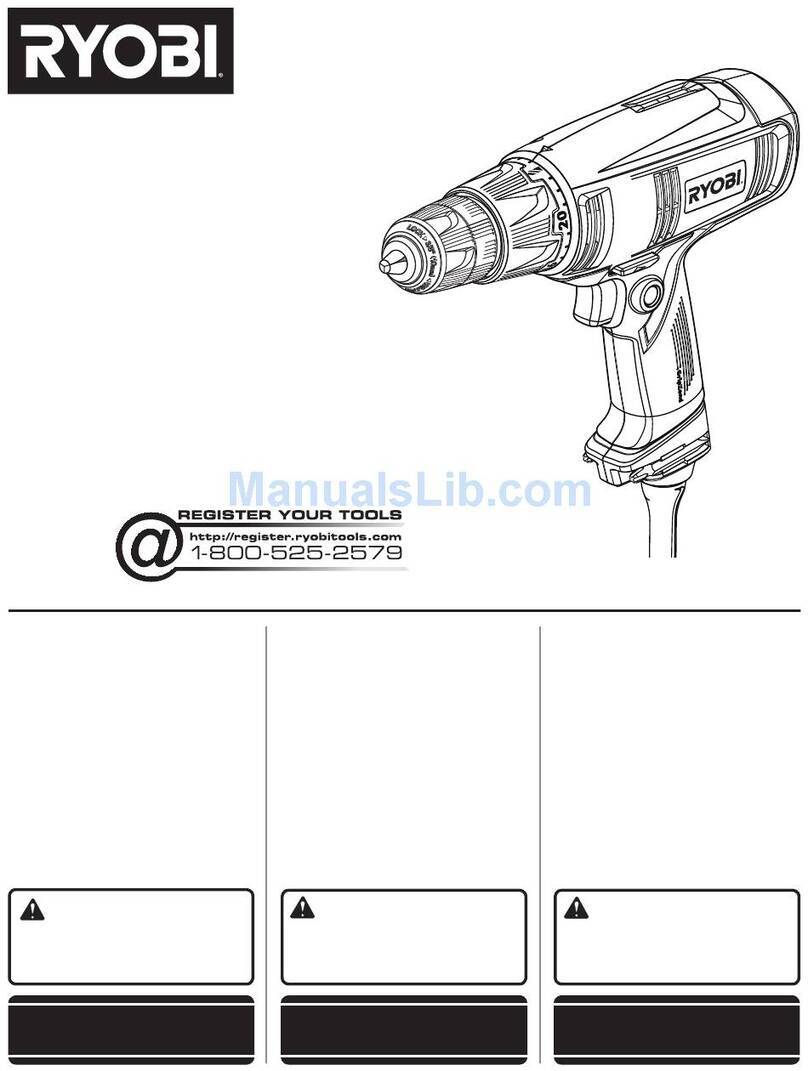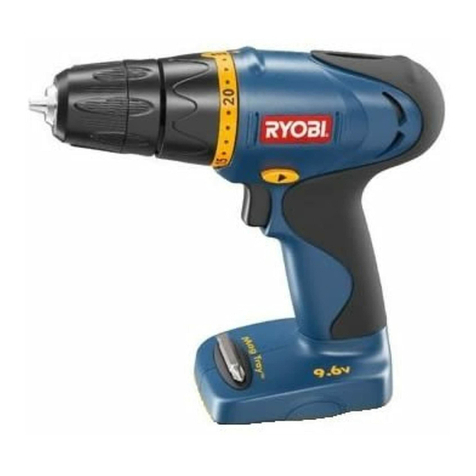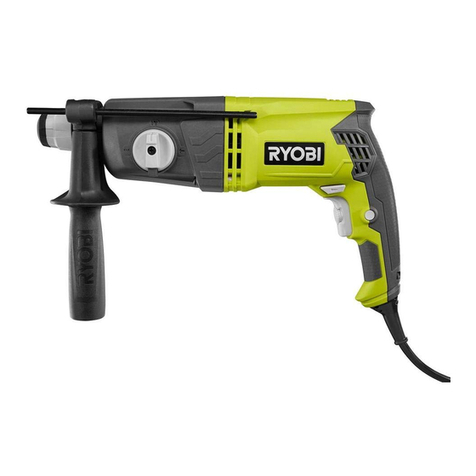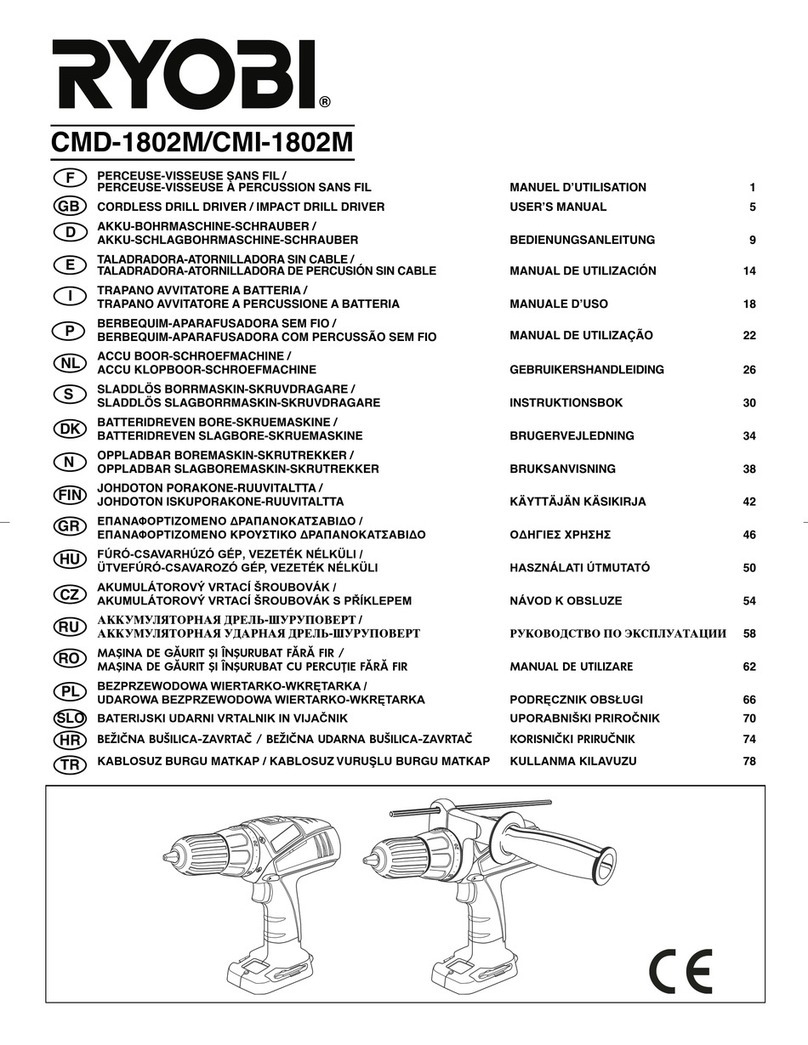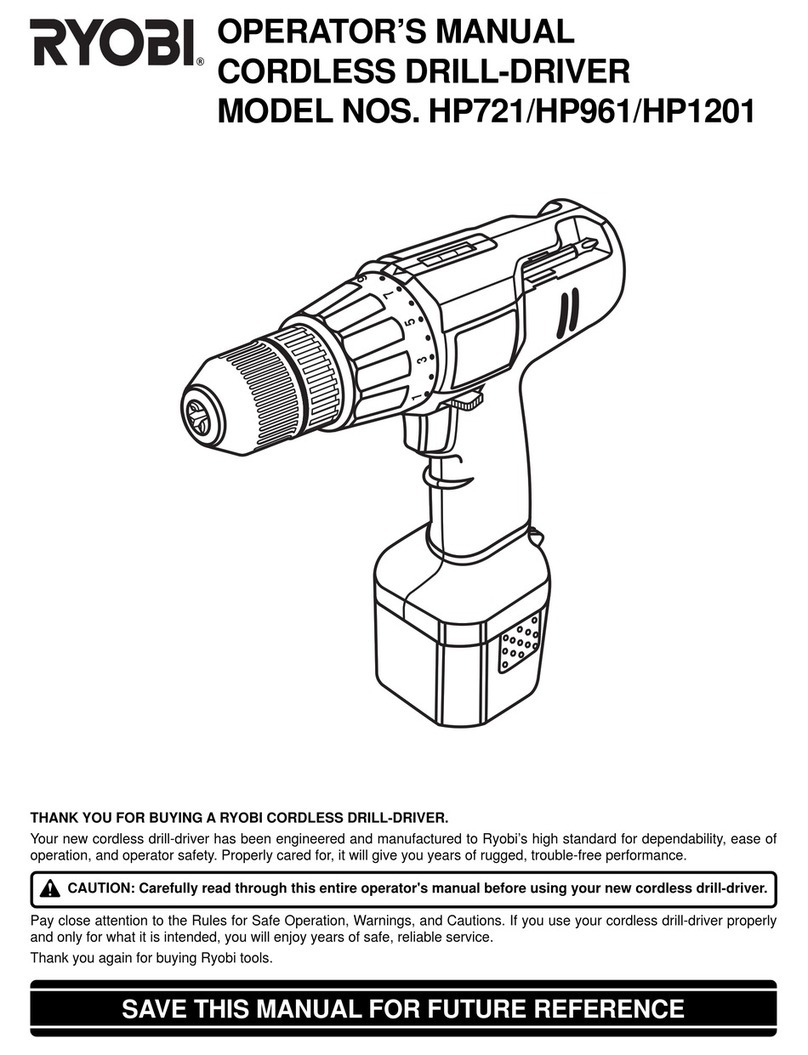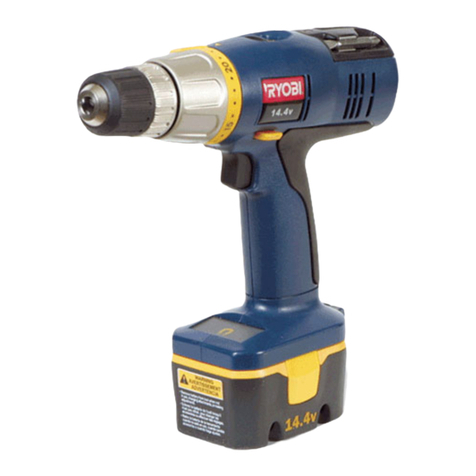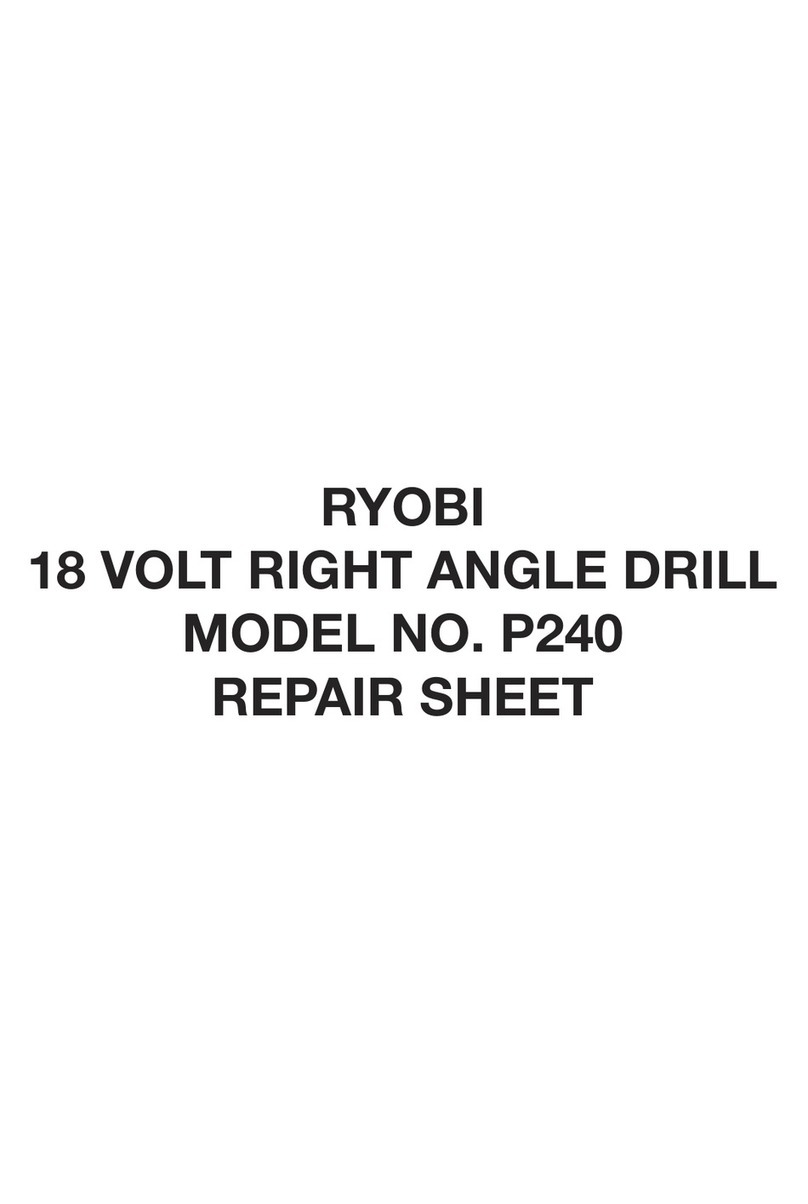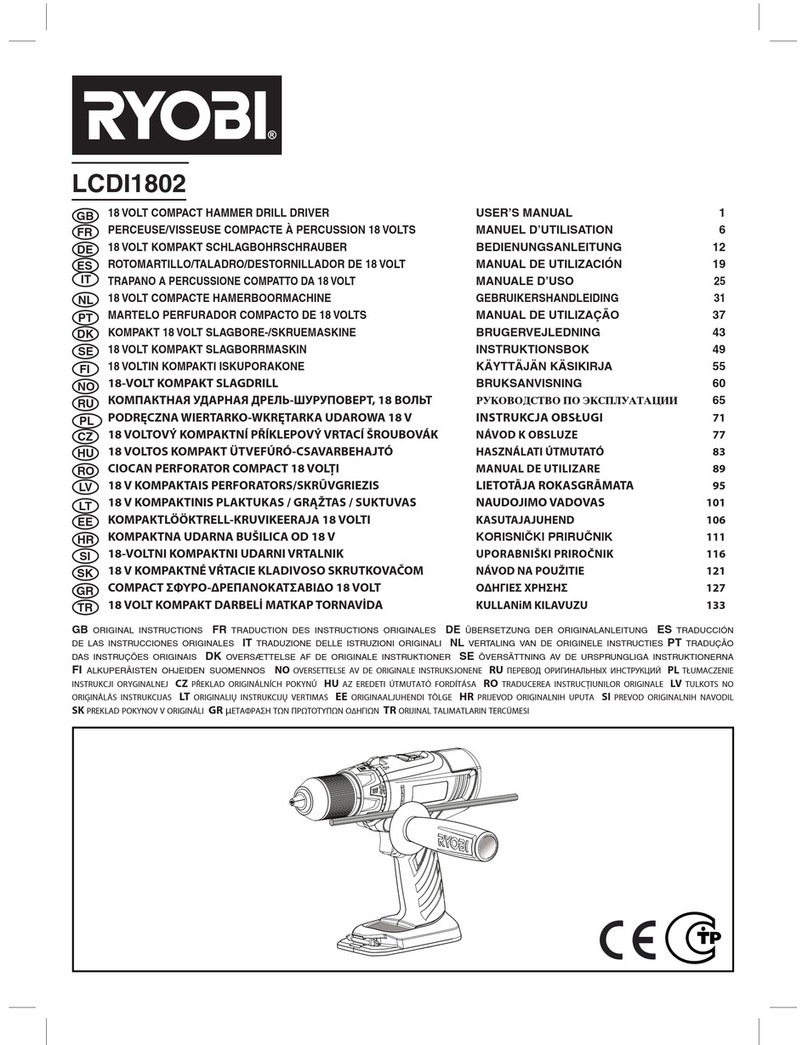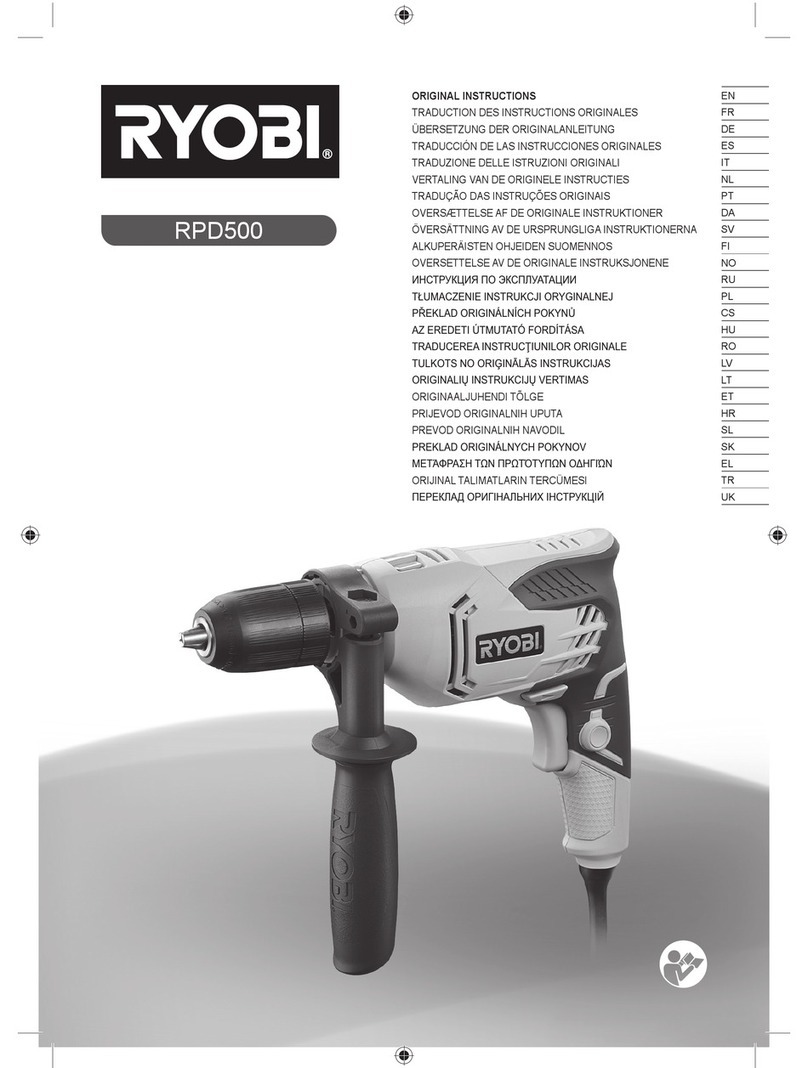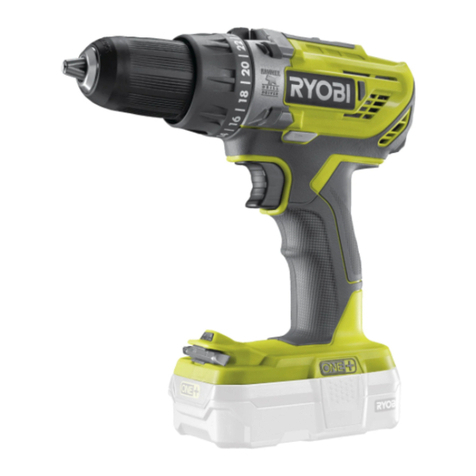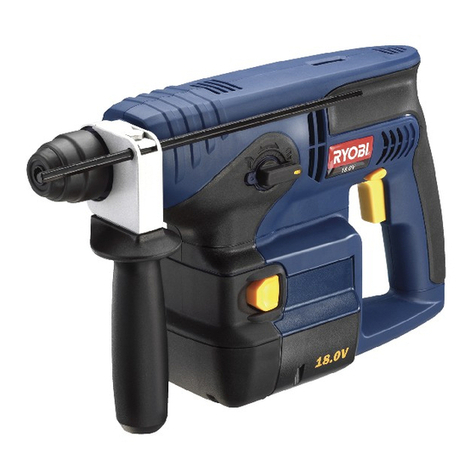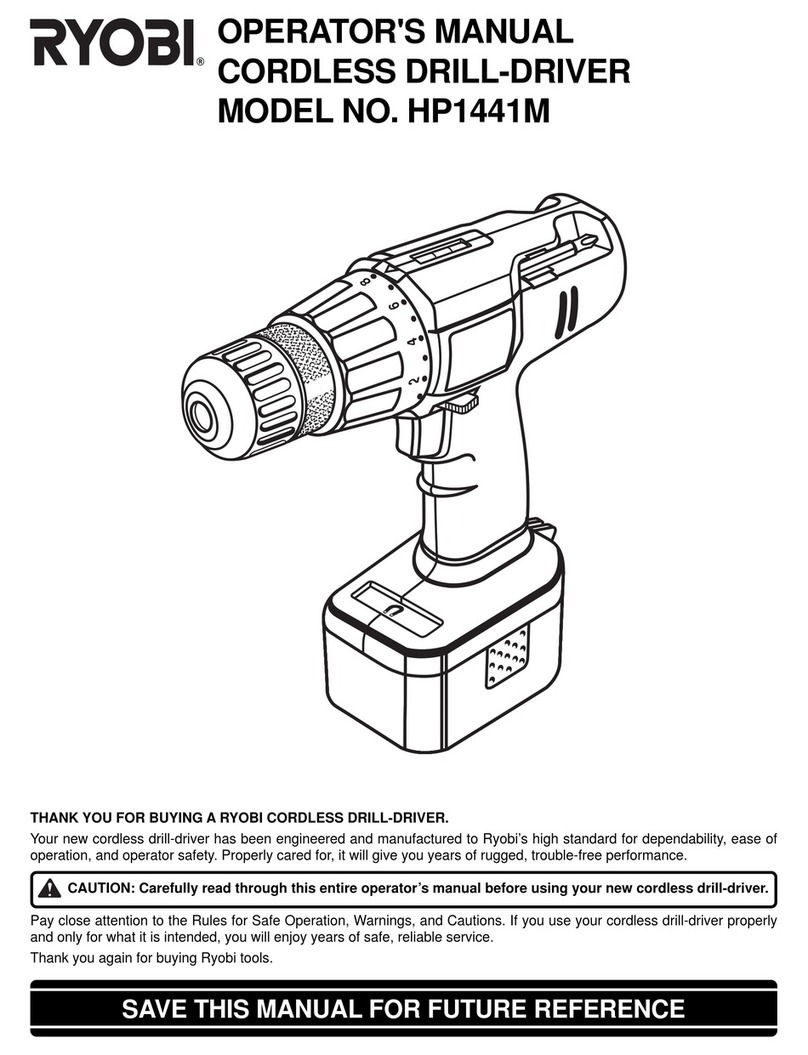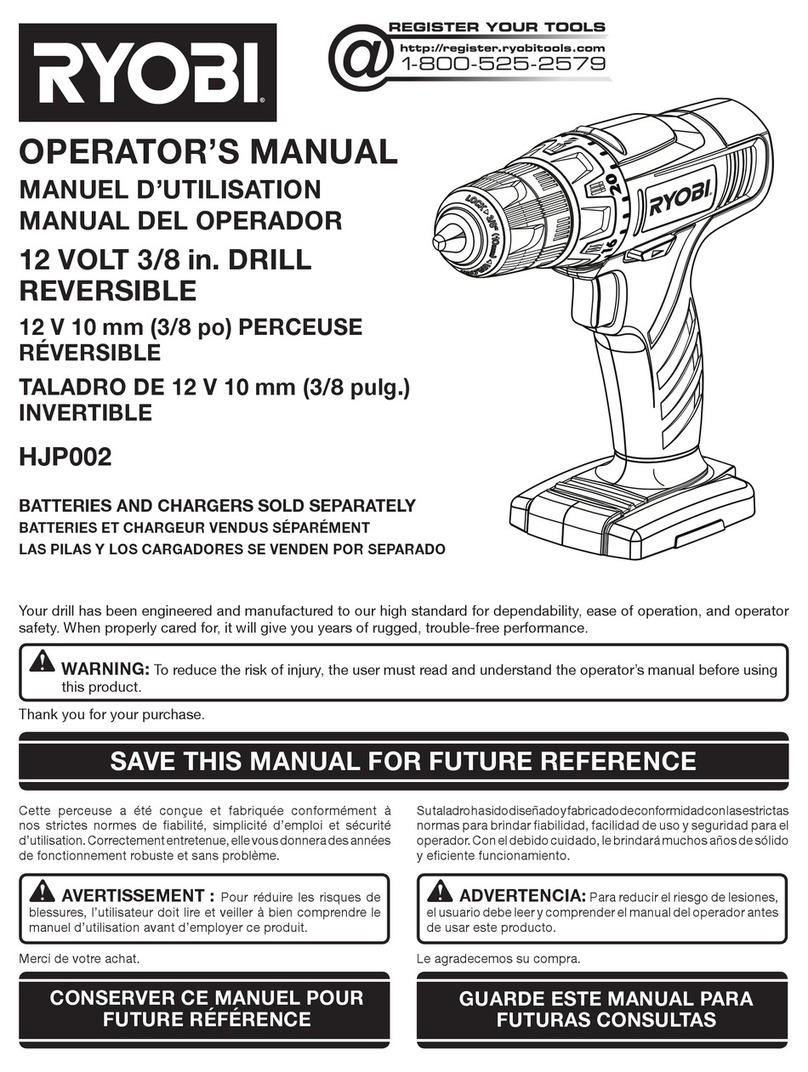
7 – English
OPERATION
VARIABLE SPEED
This tool has a variable speed switch trigger that delivers
higher speed with increased trigger pressure. Speed is con-
trolled by the amount of switch trigger depression.
NOTE: You might hear a whistling or ringing noise from the
switch during use. Do not be concerned; this is a normal
part of the switch function.
DIRECTION OF ROTATION SELECTOR
(FORWARD/REVERSE/CENTER LOCK)
See Figure 2, page 9.
The direction of bit rotation is reversible and is controlled
by a selector located above the switch trigger. With the drill
held in normal operating position, the direction of rotation
selector should be positioned to the left of the switch trigger
for forward drilling. The drilling direction is reversed when
the selector is to the right of the switch trigger.
Setting the direction of rotation selector in the OFF (center
lock) position helps reduce the possibility of accidental start-
ing when not in use.
CAUTION:
To prevent gear damage, always allow chuck to come
to a complete stop before changing the direction of
rotation.
To stop the drill, release switch trigger and allow the chuck
to come to a complete stop.
NOTE: The drill will not run unless the direction of rotation
selector is pushed fully to the left or right.
Avoid running the drill at low speeds for extended periods
of time. Running at low speeds under constant usage may
cause the drill to become overheated. If this occurs, cool the
drill by running it without a load and at full speed.
INSTALLING/REMOVING BITS
See Figures 3 - 4, page 9.
The arrows on the keyless chuck indicate which direction
to rotate the chuck sleeve to tighten or release the drill bit.
Do not use a wrench to tighten or loosen the chuck jaws.
To install bits, lock the switch trigger.
Open or close the chuck jaws until the opening is slightly
larger than the bit size you intend to use.
Raise the front of the drill slightly and insert the drill bit.
WARNING:
Make sure to insert the drill bit straight into the chuck
jaws. Do not insert the drill bit into the chuck jaws at an
angle, then tighten. This could cause the drill bit to be
thrown from the drill, resulting in possible serious per-
sonal injury or damage to the chuck.
Rotate the chuck sleeve to close and tighten the chuck
jaws.
WARNING:
Do not hold the chuck sleeve with one hand and use the
power of the drill to tighten the chuck jaws on the drill
bit. The chuck sleeve could slip in your hand, or your
hand could slip and come in contact with the rotating
drill bit. This could cause an accident resulting in serious
personal injury.
To remove bits, lock the switch trigger and open the
chuck jaws.
The bit provided with the drill can be placed in the storage
area, located on the base of the drill.
DRILLING/DRIVING SCREWS
See Figure 5, page 9.
Check the direction of rotation selector for the correct
setting (forward or reverse).
Secure the workpiece in a vise or with clamps to keep it
from turning as the bit rotates.
Hold the drill firmly and place the bit at the point to be
drilled, or where the screw is to be driven.
WARNING:
Do not drive a screw where there is likely to be hidden
wiring behind the surface. Contact with a “live” wire will
make exposed metal parts of the tool “live” and possibly
shock the operator. If you must drive a screw where
hidden wire may be present, always hold tool by insulated
gripping surfaces (handle) when performing the operation
to prevent a shock to the operator.
Depress the switch trigger to start the drill.
Move the bit into the workpiece, applying only enough
pressure to keep the bit cutting or driving the screw. Do
not force the drill or apply side pressure to elongate a
hole. Let the tool do the work.
WARNING:
When drilling, be prepared for binding at bit breakthrough.
When these situations occur, drill has a tendency to grab
and kick opposite to the direction of rotation and could
cause loss of control when breaking through material. If
not prepared, this loss of control can result in possible
serious injury.
When drilling hard, smooth surfaces, use a center punch
to mark the desired hole location. This will prevent the bit
from slipping off-center as the hole is started.
If the bit jams in the workpiece or if the drill stalls, stop




